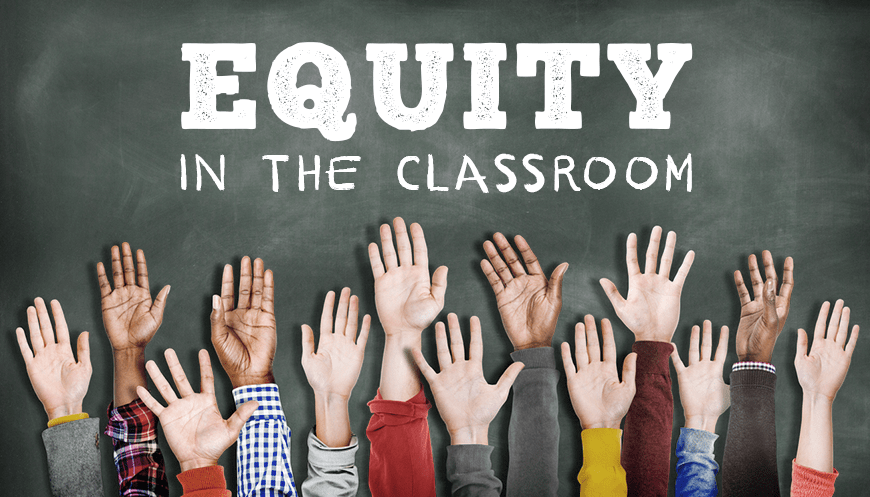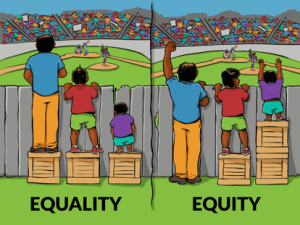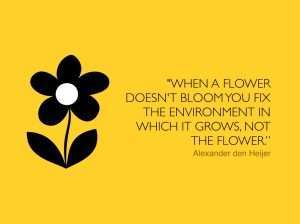BLOG
Equity in the classroom

What is the difference between equality and equity? Though they sound similar, they are not the same. It is the variance between being fair and being equal. Maintaining equity in the classroom is no child’s play. It calls for conscious effort and sensitivity. Equality is providing every student with the same resources and facilities while equity is identifying individual needs and tweaking the content and resource.
A good example is sanctioning laptops to a certain segment of people without understanding that many may not have access to a network or internet connection and thus the laptop itself may not serve a big deal.
Did you figure out the difference? Now let us look at the need for equity in a classroom setup and how it impacts not just the growing up school/college years but sculpts the self-esteem and self-worth of a person in the long run.

A recent Pew Research Center of U.S. Census Bureau data, for example, determined that the “post-Millennial generation”—those born from 1997 to 2012—is “the most racially and ethnically diverse generation” in the country’s history. With society coming up every day with a new kind of diversity and inclusion, it becomes pertinent to aspire to rise to the need to be aware of it.
Every student has unique experiences and perspectives. As a lead educator, the responsibility to nurture them depends to a great extent on you. Young adults carry a lot of inhibitions and would help to gently nudge them to voice their views in the classroom and involve them in the planning of events and seek feedback from time to time. Also, it would help to offer ample chances in the classroom to develop persuasive skills and mental processes that would prepare them to face the challenges in the academic space and the world at large. In the classroom, promoting equity is about educators choosing to encourage rather than evade the unique backgrounds, identities, and experiences that their individual students bring to the table.
How to create and maintain this equity?
As an educator, it is vital to challenge your established beliefs and embrace diversity in the classroom. Work towards leaving behind preconceived notions based on various discriminations and arrive with an open mind.
Break the power dynamics in the classroom by moving around and engaging as an equal and not a superior. If the infrastructure permits, make the seating a circular one.
Hold your wards to high expectations and avoid bias. Teachers have a subtle way of offending by pointing to a few favorites and saying,’ I expected more, you are capable of doing better, I am surprised you did not rise up to my expectation,’ etc. This creates an imbalance in the classroom.
Create a safe space to have difficult conversations with honesty and empathy. Check hurtful comments passed among students and gently show them how their overtures can derail another student’s morale.
Examine the teaching aids/charts/pictures/PPTs. What sort of stories get told through these mediums and whether it is narrow and stereotypical in their approach?
Activity suggestion:
Every school/college takes pride in celebrating Ethnic Day. This day usually showcases the diverse national/overseas cultures and their uniqueness. Around this time, students can be asked to bring three objects/items/ that are reflective of their culture and identity. Then each one may come forward to share those experiences around those objects and finally, the class can engage in a journaling practice where they write about their learning from this activity.
Living in an academically driven era, where scores and grades are the prerequisites, it is encouraging to see a few Higher Secondary/Pre University institutions balance their focus between holding up values and scoring well to compete. New Horizon PU college and New Horizon Gurukul are spaces that train their teachers to ensure equity in the classrooms and steer away from any kind of bias, or partial treatment of the wards. Regular Faculty Development Programme and peer interaction are organized to help evolve with the times and acquire skills to offer an endearing environment to the student.

Tips to show you provide an equitable space:
Are the books depictive of multicultural themes, multilingual, inclusive of diverse authors, and representative of all students?
Is the classroom décor promoting equality and justice? Does it have charts/posters that are inclusive of culturally and linguistically diverse students?

Are the curricula inclusive and create a sense of native identity?
Is the faculty sensitized about the efficacy of parent communication? The comfort level of their technology use and preferred language for interactions?
Do the workshops and guest lectures include a gamut of societal and global topics? Are the speakers from all walks of life, without just sticking to the elitist and popular names in the circuit?
The need of the hour is to sensitize educators and academicians in pursuit of becoming a teacher to first train themselves on the relevance of equity in the classroom and the urgency to be progressive in thought and action. Sometimes senior teachers tend to go on the trail of,’ in our times, it wasn’t like this…’ Today’s young adult has more than one issue to grapple with and the least one can do is be empathetic and step into their shoes to feel the stress and struggle to cope.
There is no yardstick to measure the entire student community, and hence the seriousness of practicing equity in the classroom and molding empowered individuals bestowed with an identity of their own.
Fostering equity in the classroom ensures that every student gets equal opportunity to learn, express, and grow. It goes hand-in-hand with inclusive modern education and building emotional awareness. This culture of fairness is a hallmark of gurukul schools in bangalore like New Horizon, one of the best cbse schools in bangalore.

